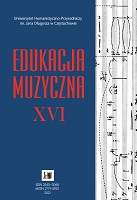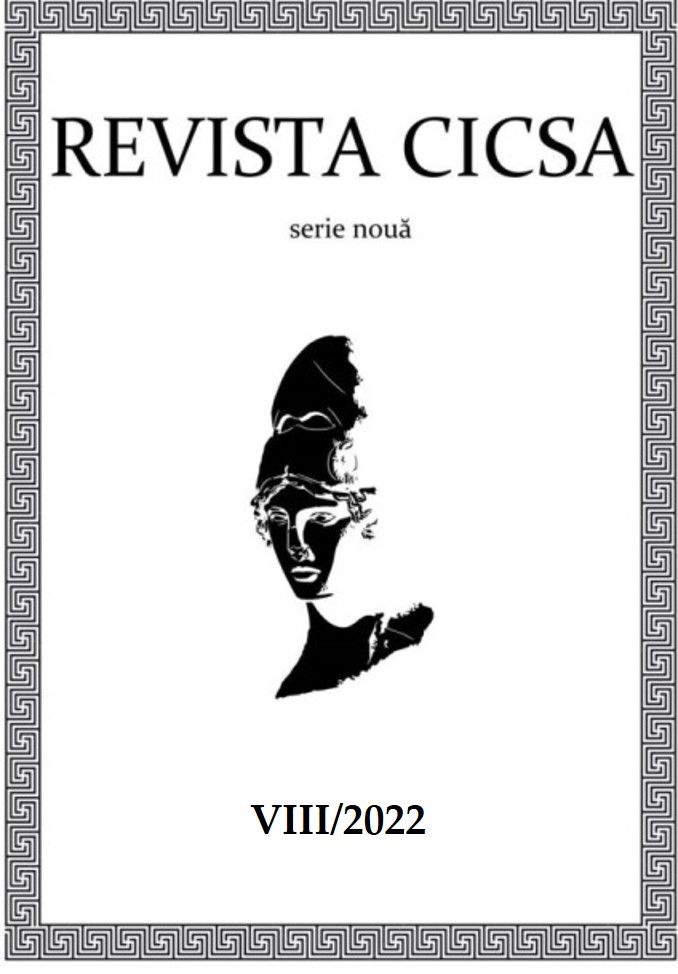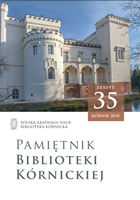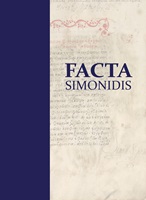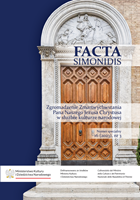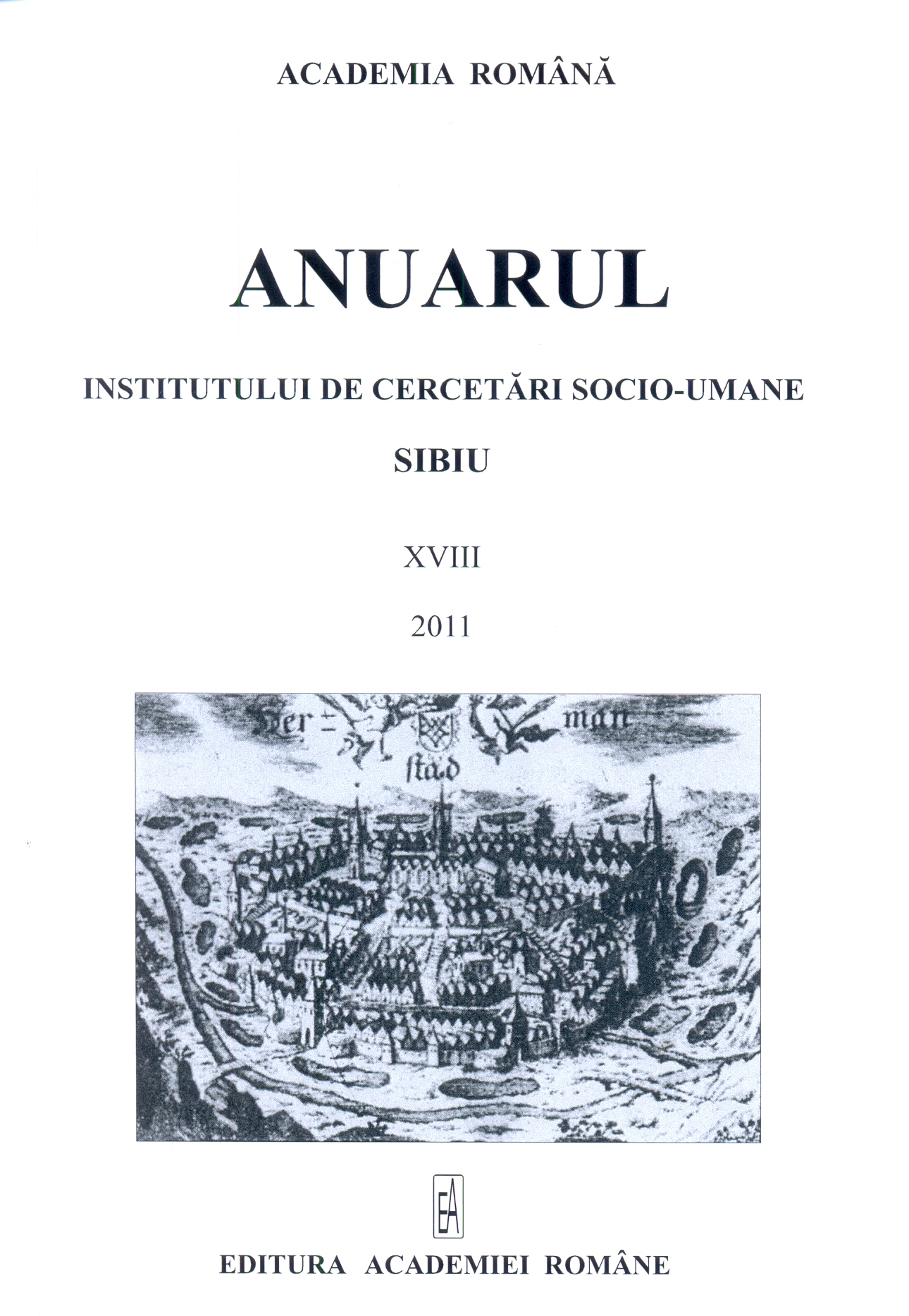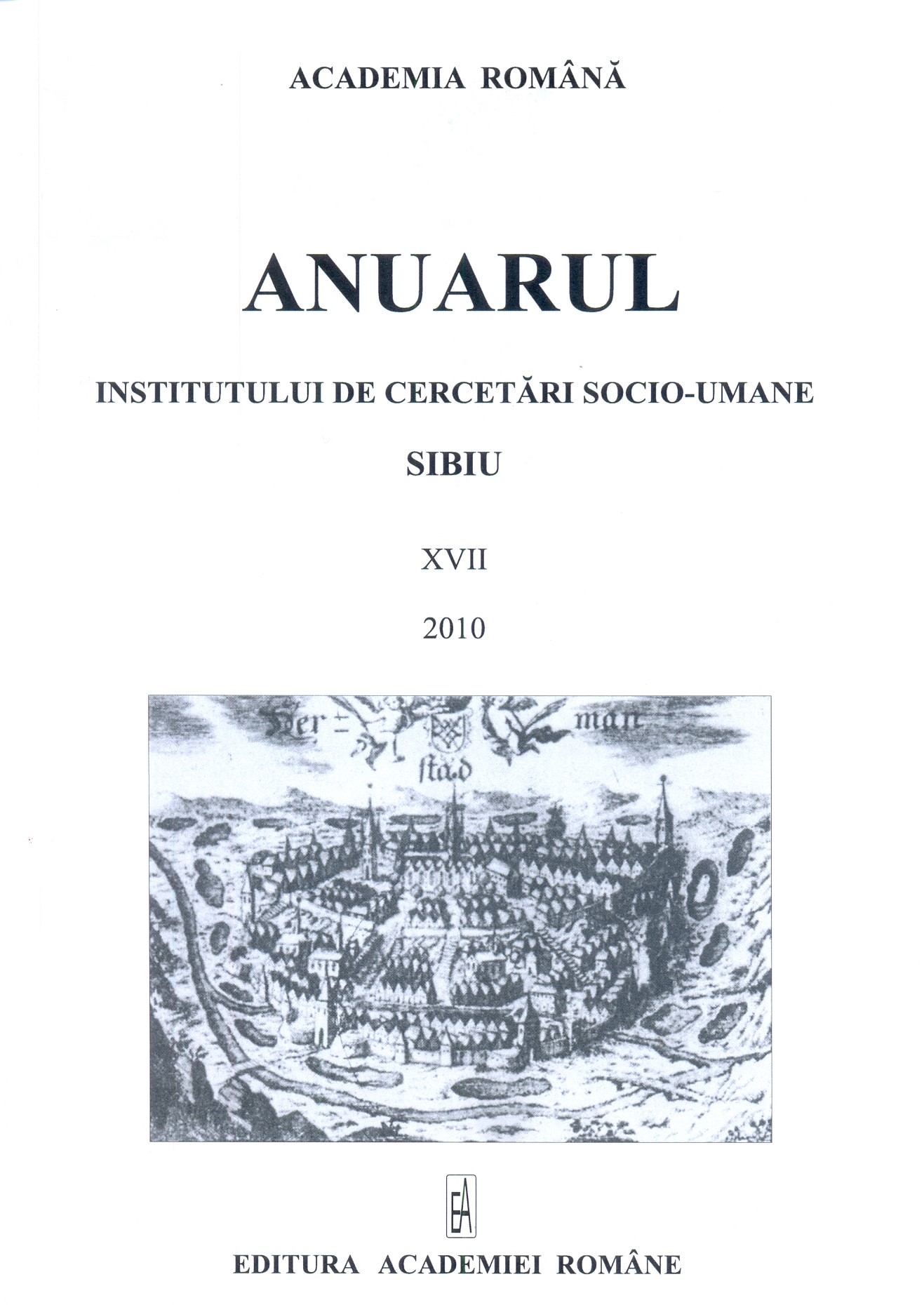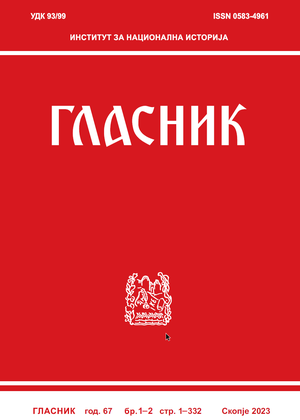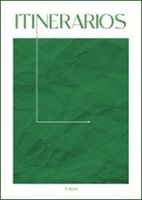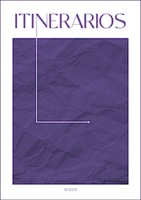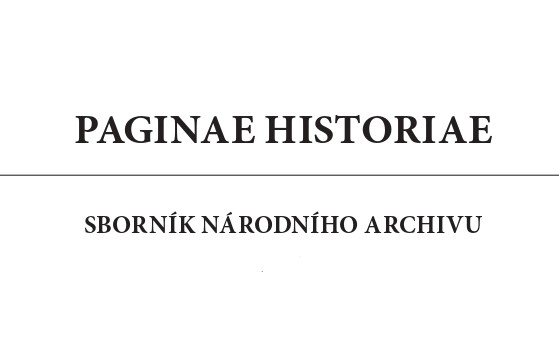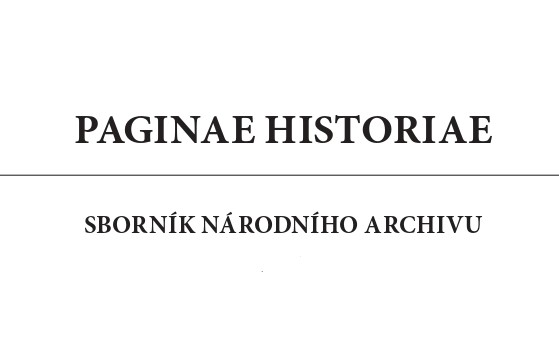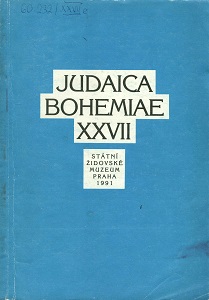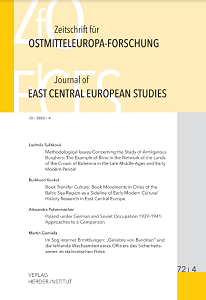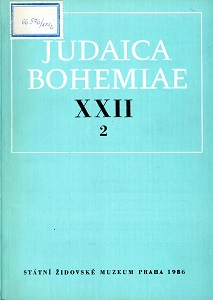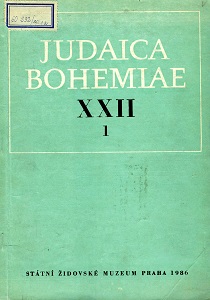Author(s): Tomasz Jasiński / Language(s): Polish
Issue: 35/2018
The paper comprises two parts: the first one discusses the history of versus quadratus from antiquity until the times of Walahfrid Strabon, and presents the origin and the history of the trochaic decapentasyllable until our own times, while the second part focuses on the structure and artistry of a famous trochaic decapentasyllable – Angilbertus’s Poem on the Battle of Fontenoy. Versus quadratus is a form of verse which has been practiced in an unbroken form from the 5th–3rd centuries BC until today in the form of a rhythmic poem, a trochaic decapentasyllable. The transformation of the prosodic form of the poem into the rhythmic form took place in the 5th century AD. Initially, the two forms developed in a parallel way, one along with the other, but finally only the trochaic decapentasyllable survived. A characteristic feature of versus quadratus was the isocolon, i.e. the same or a similar number of syllables in the particular elements, and in particular in the first hemistich. Versus quadratus differed from the “ordinary” trochaic septenarius by a great number of sound-based rhetorical figures, especially anaphoras, alliterations, homeoteleutons, and assonances. The trochaic decapentasyllable of Latin poems faithfully maintained the main features of the ancient versus quadratus. From the point of view of the rigours and the distribution of rhythms (i.e. accents), we may observe two branches of its development in the Middle Ages: the first one was considerably free in terms of the division into elements (St. Secundinus), and sometimes even the number of syllables (the so-called Verona School), and the second one, rigorist, was very faithful to the vernacular versus quadratus (De die iudicii, Gallus Anonymus, and Hilary of Orléans). The first branch was marked by a diverse rhythm system, while the second by its considerable homogeneousness with a marked domination of pure trochaic metres. It was as early as in the 13th century at the latest that the trochaic decapentasyllable was first used in vernacular poetry. It played an extremely important role in German, English, Italian, and Polish poetry. In the latter, it was probably inspired by Friedrich Schiller’s famous poem An die Freude. The German and Polish trochaic decapentasyllable continued its medieval models and only to a small extent moved away from the requirements of versus quadratus, leaving the regular division into two hemistiches with the help of the main caesura and dipodia (secondary caesurae), and isocolon. Just like in antiquity and in the Middle Ages, verses were filled with anaphoras, alliterations, and homeoteleutons. The forms of the last ones included rhymes. All the verses rhymed with a single syllable at the end of the second hemistich, and sometimes additionally on the main caesura. Sound-based rhetorical figures and rhymes were more popular in German poetry than in the Polish poetry. It was already in the Middle Ages that poetic experiments on the trochaic decapentasyllable were initiated, consisting in the doubling of some hemistiches (e.g. Stabat Mater dolorosa) or the removal of single elements of the verse (trochaic hendecasyllable). Poem on the Battle of Fontenoy should be located somewhere in-between the two aforementioned branches of the development of the trochaic decapentasyllable: the free one and the rigorist one. An analysis showed that it has a highly innovative and diversified rhythmic structure. In this respect, it surpasses all trochaic decapentasyllables. Despite this diversification, Angilbertus observed the most important rigours of the trochaic decapentasyllable. In the poem under analysis, two verses of Lombardian rhythmic hexameter, including an imitation of the hephthemimeres caesura combined with the trithemimeres caesura, were discovered. Such verses can also be found in the famous epitaphs of the Kings of the Lombards dating to the first half of the 7th century. Some eminent philologists: Wilhelm Meyer and Dag Norberg, encountered serious difficulties with these forms. Angilbertus filled his poem with the language of the Bible; however, he once quoted it via the famous poet Paulinus of Aquileia. Similarly to Paulinus, Angilbertus used school Latin. Neither Paulinus nor Angilbertus can be recognised as poets referring to the experiments of the Verona School. Peter Godman’s opinion on Paulinus in this scope is unjustified. Paulinus and Angilbertus share the mastery of meter and a great respect for language, but also the lyrics of the Vulgate. Paul von Winterfeld noted that when writing his planctus, Angilbertus consciously used certain figures of speech referring to vernacular poetry to underline the expression of the poem. Nevertheless, his was not folk (Mimen) or vernacular poetry – it only referred to its achievements
More...
